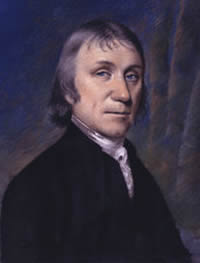Communication Disorders
Communication Disorders involve a wide variety of problems in speech, language, and hearing. For example, speech and language disorders include stuttering, aphasia, dysfluency, voice disorders (hoarseness, breathiness, or sudden breaks in loudness or pitch), cleft lip and/or palate, articulation problems, delays in speech and language, autism, and phonological disorders.

Speech and language impairments and disorders can be attributed to environmental factors, of which the most commonly known are High Risk Register problems, which include drugs taken during pregnancy, common STD's such as syphilis, and birthing trauma to name a few. Communication disorders can also stem from other conditions such as learning disabilities, dyslexia, cerebral palsy, and mental retardation.
General Strategies
- treat the student with a disability as you would any other student.
- Bring to the student's attention science role models with disabilities with a similar disability to that of the student. Point out that this individual got ahead by a combination of effort and by asking for help when needed.
- Students with communication disorders should be encouraged to discuss their functional difficulties and needs in private during the first week of classes and to talk about ways to compensate.
- When it appears that a student needs help, ask if you can help. Accept a "No Thank You" graciously.
- Encourage classmates to accept the student with communicative problems.
- Be a good speech model. This will indicate to all that good communication is desirable.
- An atmosphere conducive to easy and good interactive communication should be established and maintained in the classroom.
- Consult a Speech Language expert concerning each child with a communicative disorder in your class and work with him/her throughout the class.
- Keep up-to-date on the student's accomplishments in therapy.
- Give students with speech impairments opportunity to speak in class.
- Give them time to express themselves, do not interrupt or try to fill in gaps for them.
- Speak to them naturally.
Teacher Presentation
- Maintain contact with student.
- Allow students to tape lectures.
- Provide an interpreter (signed English or American Sign Language) to those who require another form of communication.
- Encourage and assist in facilitation of participation in activities and discussions.
- Be patient.
- Be a good listener.
Laboratory

- Allow more time for the student to complete activities.
- Place the student within reasonable distance from the instructor to meet their needs.
- Anticipate areas of difficulty in access and involve the student in doing the same. Together, work out alternate procedures while trying not to disengage the student from the activity.
- For students who cannot use the computer because of other physical limitations in their hands or arms, explore avenues for obtaining adaptive access software (including Unicorn keyboards), special switches, Power Pads, eye controlled input systems, touch screens, footmice, and other special equipment.
- If appropriate, provide assistance, but also provide positive reinforcement when the student shows the ability to do something unaided.
- Use a peer-buddy system when appropriate.
- Lastly, consider alternate activities/exercises that can be utilized with less difficulty for the student, but has the same or similar learning objectives.
Group Interaction and Discussion
- Encourage classmates to accept the student with communicative problems.
- An atmosphere conducive to easy and good interactive communication should be established and maintained in the classroom.
- Encourage and assist in the facilitation of participation in activities and discussions.
- Allow more time for the student to complete activities.
- Allow for multiple means of presentation and expression.
Research
- Review and explain to the student the steps involved in a research activity. Think about which step(s) may be difficult for the specific functional limitations of the student and jointly devise accommodations for that student.
- Use appropriate lab and field strategies according to the nature of the research.
- Allow more time for the student to complete activities.
- With the student, work out alternate procedures which do not disengage the student from the activity.
- Anticipate areas of difficulty in access and involve the student with a communication disability in doing the same. Together, work out alternate procedures while trying to disengage the student from the activity.
- If appropriate, provide assistance, but also provide positive reinforcement when the student shows the ability to do something unaided.
Field Experiences
- Discuss with the student any needs, problems or alternatives he/she anticipates in the field learning environment.
- Consider alternate activities/exercises that can be utilized with less difficulty for the student, but has the same or similar learning objectives.
- Make special advance arrangements with curators during passive visiting field trips.
- When information gathering involves a physical action that the impaired student cannot perform, try a different experience yielding the same information.
- In the field, provide assistance, but also provide positive reinforcement when the student shows the ability to do something unaided.
Testing
- Allow more time for the student with communication impairments to complete tests in their optimal mode of communication.
- Design tests that are appropriate for the student's disorder (written, drawn, or oral.)
- Writers could be provided for test taking if the individual requires such assistance.
- Check to be sure that test instructions are completely understood by the child and provide any additional assistance that may be needed.
Communication Disability Organizations
American Speech-Language-Hearing Association
The mission of this association is to promote the interests of and provide services for professionals in audiology, speech-language pathology, and speech and hearing science. It also promotes advocacy for persons with communication disabilities.
Developmental Delay Resources
Developmental Delay Registry (DDR), a nonprofit organization dedicated to meeting the needs of those working with children who have developmental delays in sensory motor, language, social, and emotional areas.
Hanen Centre
The Hanen Centre is an non-profit charitable international organization dedicated to providing early speech - language intervention to all young children with special needs and speech language delays.
National Aphasia Association
The National Aphasia Association is a nonprofit organization that promotes public education, research, rehabilitation and support services to assist people with aphasia and their families.
Communication Disability Resources
Aphasia
This site contains excellent web sites, organizations, general informations and chat lines.
Apraxia
This site contains excellent web sites, organizations, general informations and chat lines concerning apraxia.
Communication Aids for Language and Learning
The CALL team is dedicated to serving those in Scotland with severe communication difficulties; physical disabilities; and mobility problems.
Communication Disorders
This site contains excellent web sites, organizations, general informations and chat lines dealing communication impairments.
General Information about Speech and Language Disorders
This is a fact sheet that gives definitions, characteristics, and other information.
National Institute on Deafness and Other Communication Disorders
NIDCD facilitates and enhances the dissemination of information in the following areas: hearing, balance, smell, taste, voice, speech, and language.
Net Connections for Communication Disorders and Sciences
This site provides many useful links.
Stuttering
This site contains excellent web sites, organizations, general information and chat lines about stuttering.
"What to Do and What to Know When Speaking with a Person who Stutters"
This site provides general information about stuttering.
Assistive Software for Communication Disorders
Kurzweil 3000 for Macintosh by Kurzweil Educational
The Kurzweil 3000 for Macintosh is helping to meet the challenge of reading caused by dyslexia, attention deficit disorder and other disorders. Kurzweil 3000 reads scanned books or electronic text aloud using synthetic speech. This patented auditory and visual presentation of information helps measure reading accuracy, speed and comprehension for struggling readers.
Availability: Freeware
Contact: Kurzweil Educational USA
Phone: +1-800-894-5374
Fax: +1-781-203-5033
E-mail: info@kurzweiledu.com

